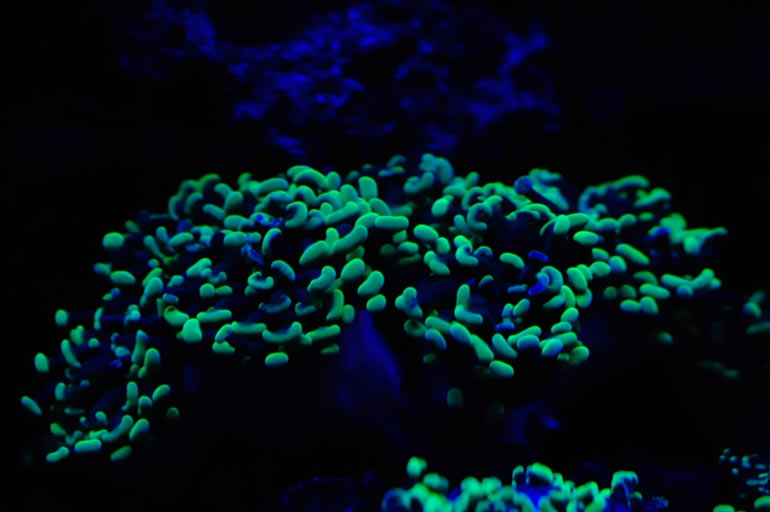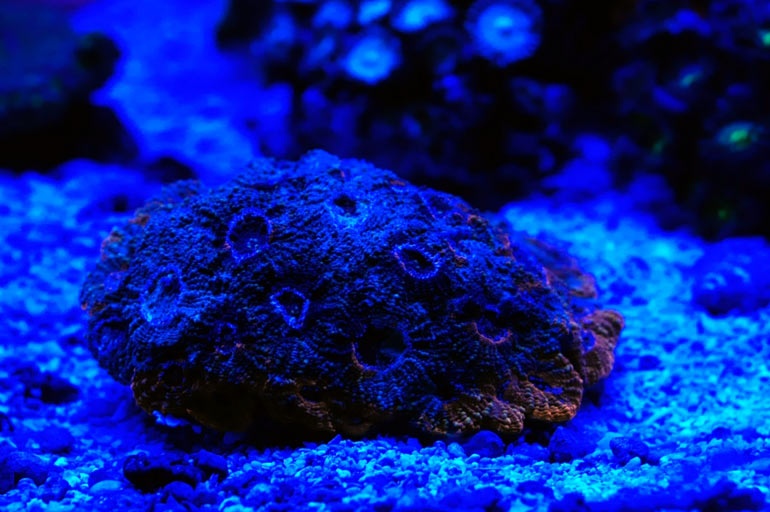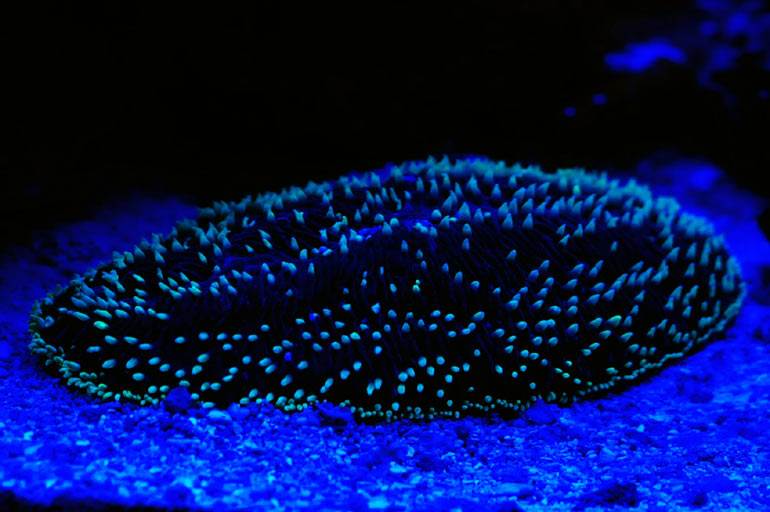A few months later, when I attended the Boston Reefers' BRASS event, I had more time to study these bulbs. I was impressed by their brightness, and how feather-light they were. I was concerned that some hobbyists might not realize that they were NOT a T5 bulb, and install the tube of LEDs into the wrong sockets of the new IceCap lamp fixture only to ruin the bulb due to voltage issues. Yes, their fixture has a small sticker that states "LED bulb" but sometimes people don't notice those small details. I even suggested they paint the socket/endcap a different color to avoid any mix-ups.
At that same show, I was told about the strong demand for a retro-kit. For those of you that don't know that term yet, it simply means the ability to install something yourself, akin to 'after market' parts. Rather than a pristine fixture made by a manufacturer, retro kits allow the person to install a few components in an existing set up. So these T5-shaped LED bulbs would soon be available to hobbyists everywhere, thanks to IceCap, Inc. I eagerly awaited their release. Later when I was in Seattle, I met Laura Birenbaum of IceCap who just happened to have them in her vehicle. It was a rainy night, probably between 9 and 10 p.m. Standing under the flipped-up hatch of her SUV (which acted like a giant umbrella) looking at the retro bulb lit up, she was able to demo the lights with a simple power inverter. Passing cars in the parking lot slowed down to see what those many blue dots were. We oohed and aahed and immediately noted how clean they looked, and how they would be easy to maintain.
Finally they were available, and I was ready to place my order. Unsure how I'd suspend them over my tank, I found myself delaying that purchase until I had a clear picture in my mind. Should they be installed perpendicular to the tank, or parallel with the VHO lighting? Would they replace my beloved VHO super actinic bulbs? Where on earth would they fit otherwise?
I got a phone call from a Steven Pro of IceCap asking me if I was willing to try out the very lights I was wanting to order. Timing is everything, right? I replied absolutely. He told me that these lights would not replace my VHOs, but that I would be impressed. We agreed on three 2' sections primarily because they would be the easiest to ship compared to longer bulbs. My tank is 6' long, so it seemed logical.
They arrived in a large flat box, each Retro LED packed in a smaller box lined with Styrofoam. I don't see how a single bulb could ever suffer damage with packaging like this. Each bulb comes with its own power supply. It has a short cord running from one end, and it does not need endcaps. The power supply's 6' cord plugs into the short cord - this is the quick disconnect. Two small white clips are included to affix the bulb over the tank.
Since our club meeting was coming up, I brought one with me to show to our members. When I plugged it in, there were some delighted reactions from the audience. After the meeting, some members took a closer look. I brought it back home, but still had to come up with a way to install it over my tank, something I would be comfortable with.
I tried to see how my reef looked under the lighting, but holding it in my hand wasn't a good method since I couldn't stand back to see the results. And there was another hurdle that had to be overcome, in that these are not "retro LEDs" but rather "retro moonlight LEDs". In my head, I kept thinking of these as a better and more economical choice to T5 actinics. After all, LEDs are all the craze lately. When I tried them out with my tanks lighting on, they were invisible. Carefully scrutinizing specific corals, I would rotate the bulb from left to right to see some blue glimmer appear from the LED directional lighting, but could not see it at all. I couldn't see it with only the VHO actinics on either. Apprehensively, I began to wonder how this product review would take shape, based on my initial impression. In the meantime, I still had to come up with a way to hang the lights.
Saltwater and electricity don't mix, and even low voltage can jolt a person when conditions are right. When I install any lighting over my tank, I want them to be secure. These retro lights would be no different. Laura suggested screwing them to my pendants, but that wasn't an option because mine have a glass panel. What I opted to do was to use an aluminum U-shaped section that could be screwed to the wall. I made sure to place the track where the screw would go through the sheetrock and into the wood behind - it isn't going anywhere, ever. Here's the blog entry with more detail about how they were secured: http://www.reefaddicts.com/entry.php...ghting-Install
Let me reiterate, these are Moonlights in a nifty T5 tube. They are meant to be used after the lights are off, not during the normal lighting period.
When you plug them in, there is a half second pause before they light up. I have all three plugged into a power strip and with a single switch turn them on at once. The power supplies are rather large. It would be nice if they could be stacked, similar to how extra strings of Christmas lights are plugged into one another to save space. Using a Kill-o-watt meter, it measured the three bulbs are using a combined total of 10 watts of power. Virtually nothing at all.
When the metal halides shut off, my tank is bathed in a strong blue glow of VHO lighting for 30 minutes. And when those shut off, the Retro LED Moonlights take over for the next hour. I'd say they are probably running at 15% intensity of what the VHOs produce, which is this soft blue glow that allows the corals to quietly fluoresce. Some of my fish continue to swim around rather than retreating to their favorite spot for the night. I very much enjoy this time, studying how all the different kinds of corals respond to this lighting - corals with orange, red, green, and yellow stand out nicely against the darkened reef. LPS, SPS, the giant Toadstool Leather, they all look remarkably different from what one would see throughout the day.
After that hour, they are shut off for the night. Corals need time to rest and recharge for the new day.



The Retro LEDs come in three lengths: 2', 3' and 4'. They retail $60, $80, and $100 respectively. Icecap always takes good care of their customers, so if a warranty-related issue arises, I have no doubt they will take care of it. These come with a three year warranty. LEDs are designed to last for 5 years or more, so this investment is long term, providing latenight and early morning viewing that would otherwise be relegated to darkness. Enjoy the moonlighting - it's worth it.
These lights were supplied to me free of charge by IceCap, which I must state for legal reasons.





 Menu
Menu






Reef Addicts Message